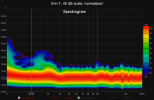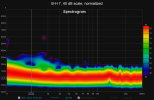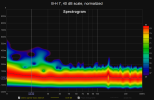ernestcarl
Major Contributor
Not sure why you would want to record an impulse if the sweep method is just that; a method to create a room impulse (while filtering out some noise).
RT60 makes more sense for acoustical rooms (=big) which have real reverbaration, not a mix of fast reflections like our small rooms.
REW has actualy this more intresting option: https://www.roomeqwizard.com/help/help_en-GB/html/graph_rt60decay.html
personaly I prefer to look at spectogram/waterfall and make it as symetric as possible
Something your thunder comparison reminded me of. I have no idea how these two would be comparable, but it would be interesting nonetheless.
That REW page seems to be under construction as image examples do not show (in my phone browser at least).
For small rooms where modal influence is a bigger issue, T60M is probably the most useful RT trace to view — although hardly anyone looks at it right now given one has to generate it. But I’ve seen some rather unusual erratic variabilities in the results even when no EQ or level change is applied which makes me unsure of how to read it.



